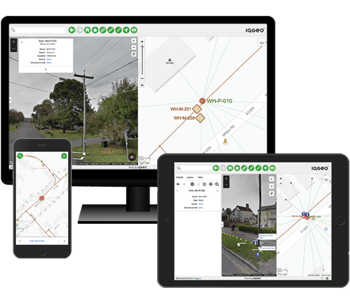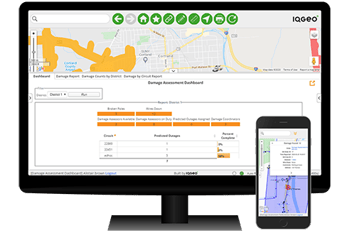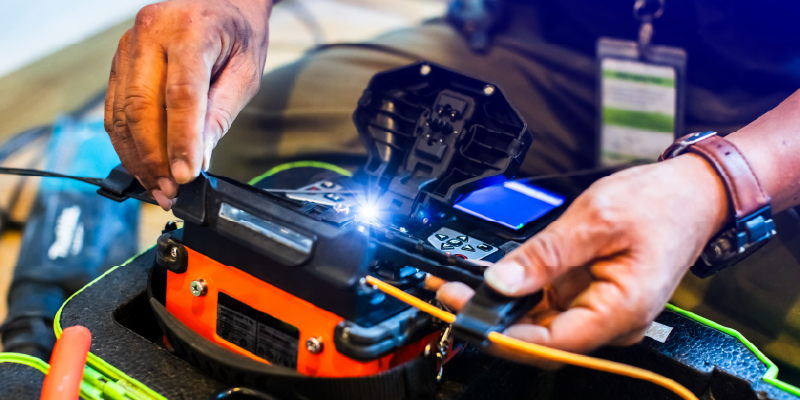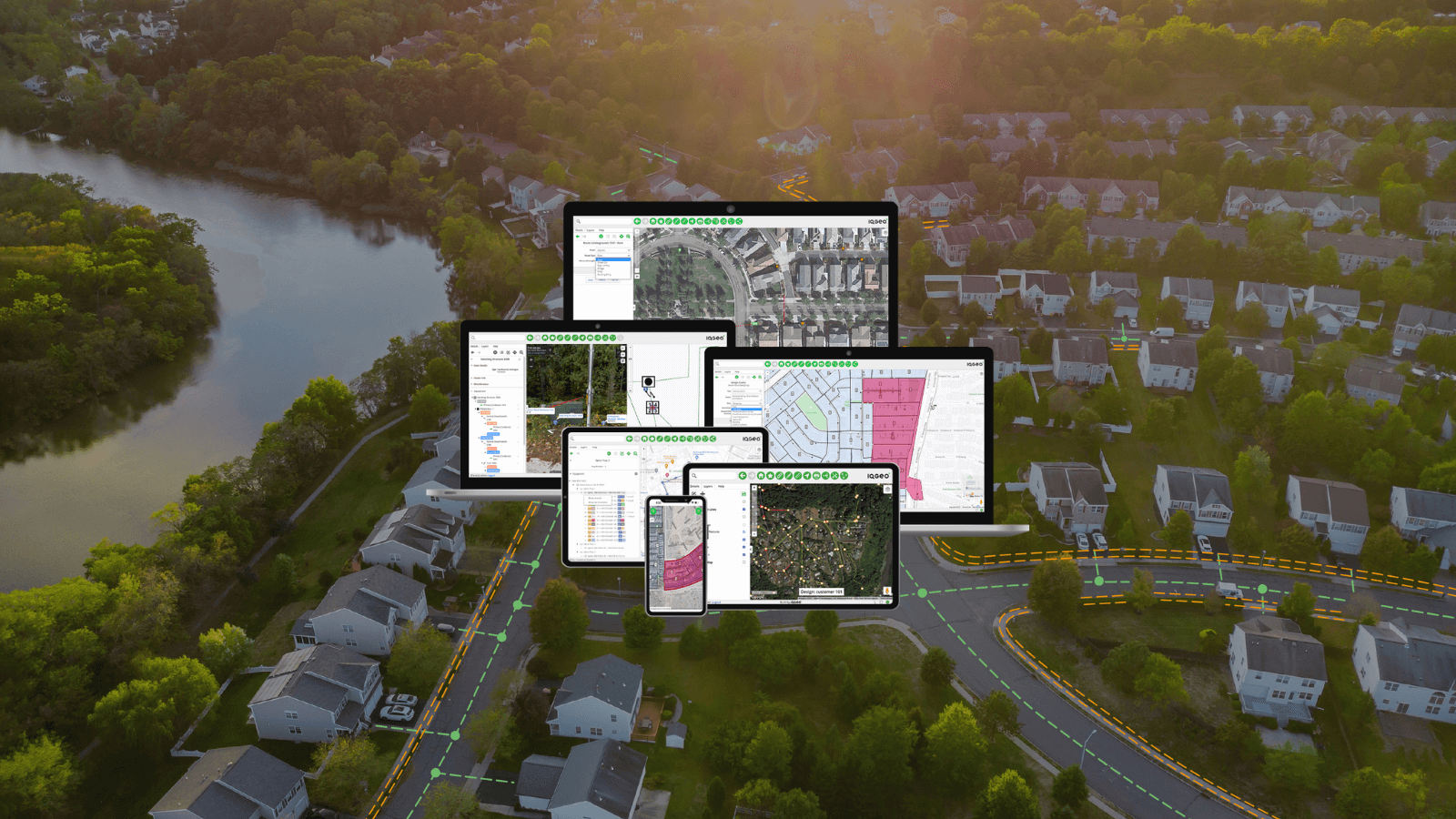There are many challenges that need to be tackled when a disastrous storm event or similar emergency occurs in an operations regional footprint. Some organizations in certain parts of the world are all too well versed on the challenges due to repeated experiences. With climate change, severe events like hurricanes, wildfires and extreme weather are becoming common place for the rest of us.
As these challenging situations wreak havoc on network infrastructure, they represent an existential threat to resilient and reliable operations. In this blog I would like to focus on the five challenges that we have identified in working with our customers across electric, gas and telecommunications to develop disaster recovery strategies. What stands out most about this list are the potential benefits that conquering these challenges brings to all organizations in the form of time savings, greater productivity, increased safety and better collaboration across all business units.
-
Management of employee contact lists and resource allocation
-
Visibility of problems and severity levels
-
Internal and external activity collaboration
-
Effective power management and restoration
-
Capturing status, fixes and follow up actions
1. Management of employee contact lists and resource allocation
In this pandemic era, the location of staff and prompt and accurate communication of priority tasks during an emergency incident is more important than ever before. Operations teams normally maintain a contact list of employees and their roles. This is helpful but often hard to keep current and not nearly as powerful as having a centralized, geo-located overlay of this information across your network footprint. Having an overlay of technicians and contact information together with the open network issues allows for better coordination and faster restoration response. Geo-referenced integration is an incredibly powerful resource for a wide range of scenarios including the need to alert employees about emergency issues in specific geographies.
2. Visibility of problems and severity levels
Another key challenge in storm recovery is the visibility of reported issues in a real or near real-time view along with severity levels and activity status. Often the convergence times are unnecessarily delayed simply because data has not been updated on a spreadsheet to indicate a problem update or accessibility change. This is something every technician in the field has had to deal with and it is difficult for them to manage efficiently. Delivering this information on a mobile geospatial platform is invaluable to a technician who is already racing against time in a dangerous storm recovery situation.
3. Internal and external activity collaboration
Let’s face it, coordination of effort becomes even more complex when you need to do it with entities outside your organization. For example, informing a utility or telecoms operator of repair activities close to their assets. These organizations are under the same pressures and timelines as you, and getting help coordinating efforts that requires their resources can be challenging at best. It can also be just as difficult to coordinate resources within your organization as people are tied up with restoration activities and difficult to track down. Having a view of all activities updated real-time, and actually being able to assist external groups like the power company by showing where they currently have outages, provides a level of collaboration that benefits everyone.
4. Effective power management and restoration
Power management almost always plays a key role in restoration and has a major impact on your customer’s service experience. In the MSO world today when a customer’s power is restored, they expect their telecoms services to work in concert. Providing minimal service interruptions often means manually powering up parts of the network that are down so that customers can still have internet services. This requires the intelligent deployment of portable generators in the right locations, constant refueling and eventual retrieval. For the MSO, this adds another entire set of coordination and maintenance efforts that fall on the already burdened shoulders of the operations supervisors and managers. Having the ability to manage the portable generator process including auto ticketing for refueling and full visibility of all deployed generators on your mobile platform is an absolute game changer and frees up management to focus on other critical restoration efforts.
5. Capturing status, fixes and follow up actions
Detailing follow ups captures the scope of the challenge that you are confronted with both during and in the aftermath of a severe storm or emergency event. Accurately documenting and creating a snapshot of all the reparation activities including the inevitable temporary fixes is crucial to the maintaining the integrity of the network plant. All too often temporary fixes become “temporarily permanent” until they eventually create their own network failures Digitizing the process and providing an easy way to document temporary fixes on your mobile platform as well as providing full visibility and tracking on them is an important step towards addressing this inherent problem.
Conquering the challenges
While these five areas are by no means the only challenges network operators encounter during severe storm and emergency events, they are all key areas that need to be effectively addressed in order to facilitate a successful and coordinated recovery effort. Having seen these issues first-hand both in the field and in the NOC, I have also seen how failing to effectively address these challenges hampers short-term disaster recovery efforts and the down-stream consequences that inevitably follow.
On the upside, I have also witnessed the positive impact that a modern mobile geospatial platform like IQGeo’s can have on every one of these challenges. A mobile geospatial solution gives the unique ability to effectively address all these logistical challenges because of its inherent and powerful capabilities.
- True mobile solution that works on all devices
- Online and offline operation critical in storm recovery scenarios
- Scalability to support unexpected increases in demand
- Accessibility for all stakeholder to increase collaboration and activity coordination
- Intelligent connection to network infrastructure for real-time updates

During a chaotic disaster recovery event each stakeholder and department has an important role to play and each has a different set of needs. However, they are all looking to solve the same fundamental problem and must work together to achieve the common goal of network restoration. To conquer these 5 challenges, it is so much more productive to have a single common platform that addresses the needs of all the stakeholders by making critical updates available to everyone, everywhere in real-time.
Hear directly from TEPCO on how a modern mobile-first geospatial solution has enabled them to quickly identify blackout locations and damage, and complete recovery work more efficiently.

Director Customer Integration at IQGeo
Similar articles:



 Previous
Previous







